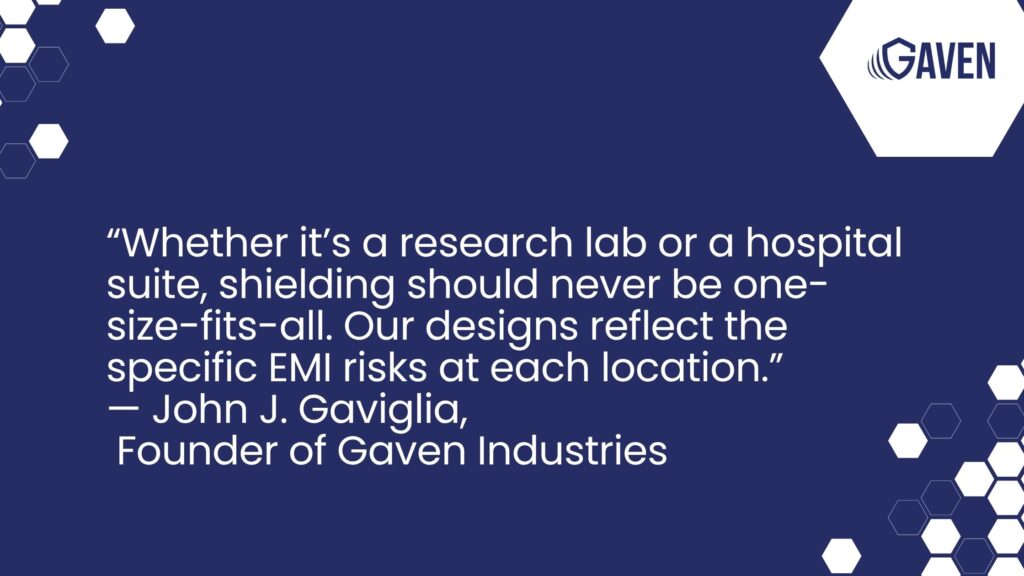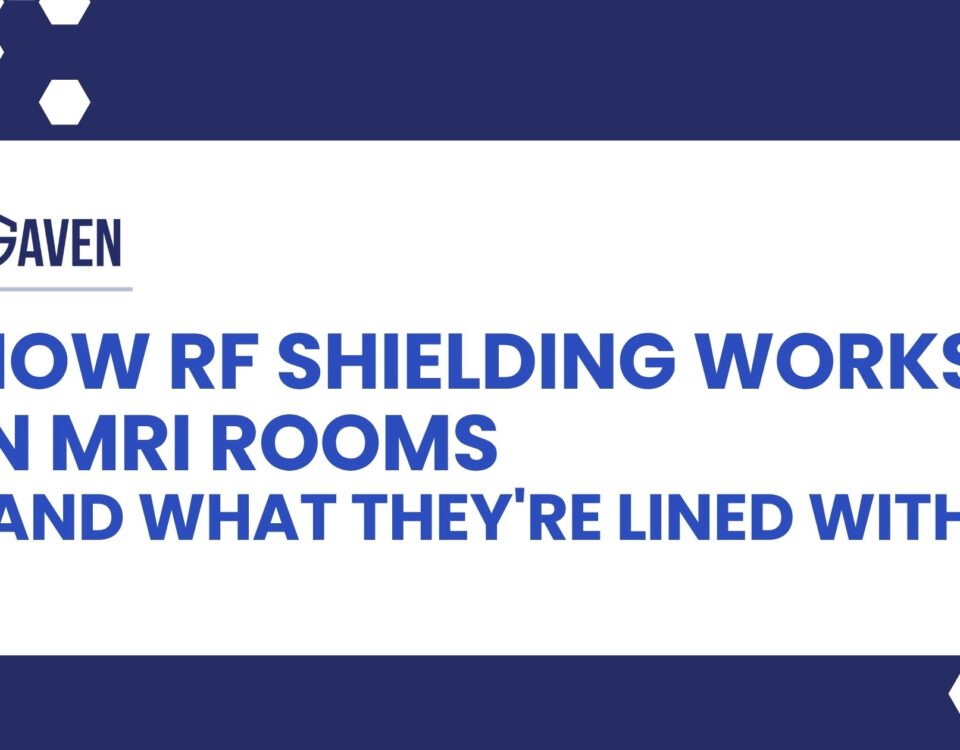


What type of shielding is used in MRI?
July 8, 2025


What is Magnetic Shielding in MRI?
July 8, 2025In MRI environments, maintaining image integrity and diagnostic precision requires complete isolation from electromagnetic interference (EMI). That’s where MRI Shielding—and more specifically, RF shielding—plays a foundational role.
RF shielding (Radio Frequency shielding) protects the MRI system from ambient electromagnetic signals that can corrupt scan data, introduce artifacts, or even disrupt equipment function. Whether the facility is a hospital, research lab, or imaging center, a properly shielded MRI suite creates a stable electromagnetic environment where precise imaging can occur.
What is the explanation of shielding effect?
Shielding effectiveness (SE) refers to the ability of conductive materials to block, reflect, or absorb unwanted electromagnetic waves. In RF contexts, this typically involves enclosing a sensitive space—like an MRI room—in a conductive barrier that prevents external RF energy from entering, and internal RF signals from leaking.
RF shielding materials such as copper and galvanized steel are selected for their high conductivity and attenuation performance. These materials are installed as continuous enclosures—walls, ceilings, floors—bonded together to form a sealed unit, often complemented by shielded doors, windows, and penetration filters.
Industries beyond healthcare rely on this principle. Defense systems, aerospace testing facilities, and cleanrooms in semiconductor manufacturing also use RF shielding to preserve signal fidelity, eliminate noise, and maintain operational security.
“RF shielding isn’t just about blocking noise—it’s about preserving signal integrity where precision is critical.” — John J. Gaviglia, Founder of Gaven Industries
What is the purpose of RF shielding?
In MRI environments, RF shielding serves one central purpose: to isolate the scanner from external electromagnetic interference. Ambient signals from mobile networks, Wi-Fi routers, HVAC systems, and even hospital telemetry can bleed into the MRI suite and disrupt imaging sequences.
MRI relies on extremely subtle electromagnetic signals emitted by hydrogen nuclei in the body. Even trace interference can degrade these signals, reducing scan clarity and leading to diagnostic errors. Shielding helps eliminate:
- Signal dropout or distortion
- Image artifacts
- Inaccurate diagnostic results
- Equipment malfunction due to EMI
MRI rooms are typically constructed as Faraday rooms—specialized spaces that function as large-scale Faraday cages. These rooms use passive shielding to create a controlled electromagnetic environment around the scanner.
“An MRI’s ability to detect subtle physiological changes is only as good as the environment it operates in. RF shielding makes that precision possible.” — John J. Gaviglia, Founder of Gaven Industries
What is the purpose of RF in MRI?
While RF shielding protects the system, radio frequencies are also central to how MRI scanners function. MRI uses pulsed RF energy to excite hydrogen nuclei in the body’s tissues. When these nuclei return to their normal state, they emit signals that are detected by the scanner and converted into detailed images.
These active RF signals must be precisely controlled and free from external interference. If uncontrolled EMI enters the scanner’s environment, it can:
- Introduce image artifacts
- Obscure fine anatomical details
- Require re-scans, delaying care
This dual nature—emitting RF for imaging while shielding from unwanted RF—makes MRI shielding an engineering challenge that requires deep experience in both active shielding MRI systems and passive barrier design.
What is Faraday’s law in MRI?
Faraday’s Law of Induction describes how a changing magnetic field induces a current in a nearby conductor. In MRI systems, this principle is both used and controlled.
When external electromagnetic fields vary—whether from nearby elevators, power lines, or electronic devices—they can induce unwanted currents inside the MRI system. These currents lead to distortions or ghosting in scans.
RF shielding helps mitigate this by forming a barrier that prevents fluctuating external fields from entering the MRI space. The shield effectively dampens environmental EM fluctuations that could otherwise trigger unwanted induction.
This is particularly critical in urban or hospital environments, where high-density infrastructure creates complex EMI conditions. Stabilizing the MRI room with proper RF shielding ensures that Faraday’s Law works for the scanner, not against it.
How much does an RF-shielded room cost?
Faraday room cost varies significantly based on application, room size, and design complexity. Core pricing factors include:
- Shielding material selection (copper foil vs. steel panel)
- Room dimensions and equipment layout
- Magnetic shielding needs within the building envelope
- Geography
- Access points (shielded doors, windows, passthroughs)
- Penetration requirements (HVAC, gas, electrical, data)
- Site-specific EMI risks
The choice between active vs. passive shielding, along with the integration of filters and grounding systems, will also affect pricing. At Gaven Industries, we’ve engineered RF shielding solutions for both major hospitals and compact research suites. Our systems are tailored to actual EMI conditions—not generic assumptions—ensuring cost efficiency without compromising performance.
“Whether it’s a research lab or a hospital suite, shielding should never be one-size-fits-all. Our designs reflect the specific EMI risks at each location.” — John J. Gaviglia, Founder of Gaven Industries

Plan for precision from the start
If you’re planning a new MRI suite or evaluating the performance of an existing one, RF shielding is the foundation for successful outcomes. It protects your equipment, ensures patient safety, and delivers the diagnostic clarity today’s imaging demands. Connect with Gaven Industries to design a shielding strategy that protects your investment and ensures diagnostic excellence.




